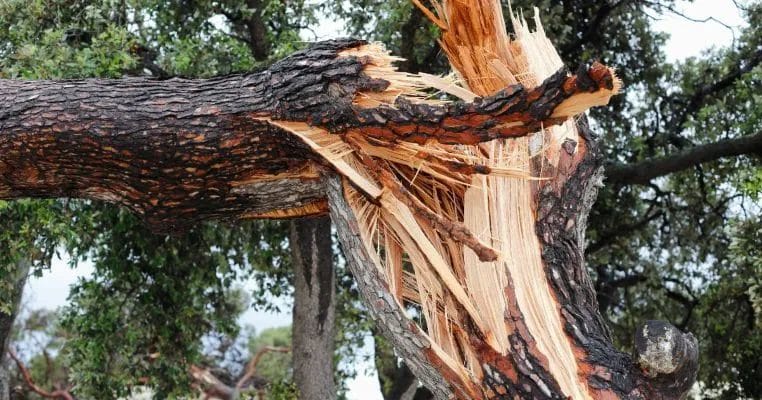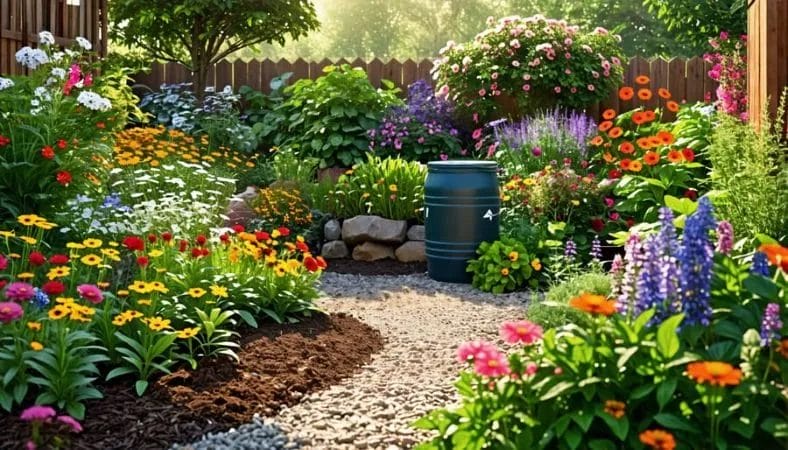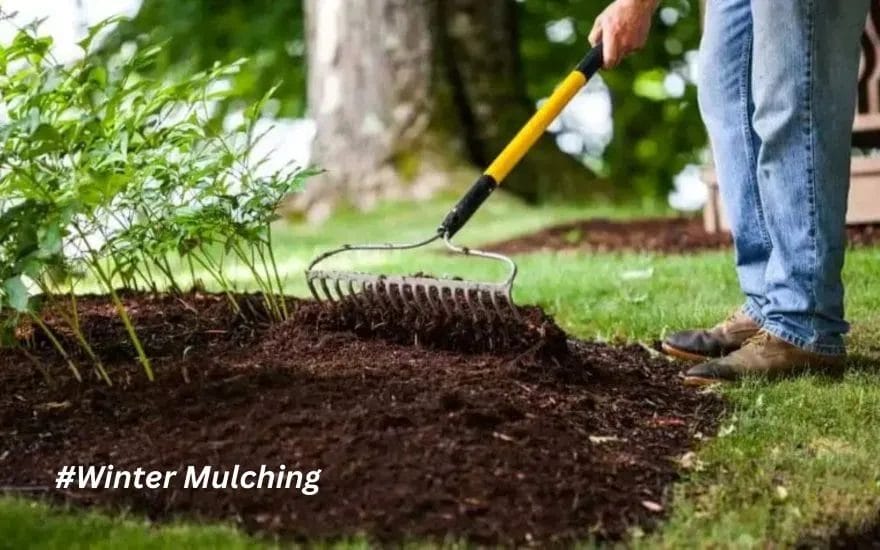
Winter mulching plays a vital role in safeguarding your plants during the winter months. By providing insulation and maintaining soil moisture, proper mulching can help protect your garden’s health against harsh cold temperatures. As you prepare for winter, consider reaching out to Smith Brothers Services or Smith Brothers Landscaping for expert advice and services tailored to your garden’s needs. Utilizing Smith Brothers Tree Services can also enhance plant longevity by ensuring a landscape that thrives even in winter’s chill. Invest in mulching to keep your plants safe and secure all season long.
Winter is a critical time for your garden, and mulching is one of the best strategies you can implement to protect your plants. By applying a layer of mulch, you insulate the soil, retain moisture, and prevent temperature fluctuations that could harm your plants. At Smith Brothers Services, we understand the importance of proper mulching techniques, as our Smith Brothers Landscaping and Smith Brothers Tree Services teams emphasize this practice during the colder months. Learn how you can effectively shield your plants and ensure their health with the right mulching methods this winter.
Understanding Winter Mulching
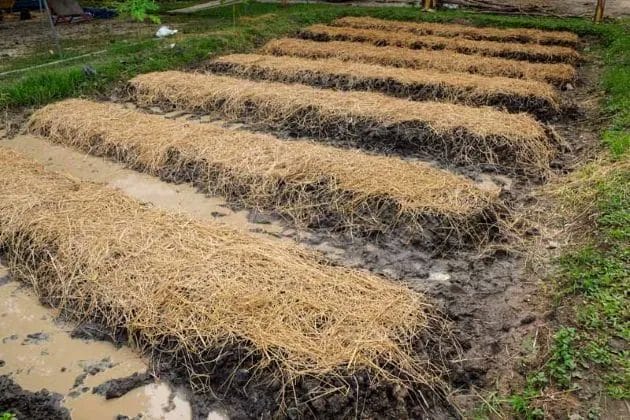
The practice of winter mulching is necessary for protecting your garden during the cold months. When temperatures drop, frost can damage your plants and soil, affecting their growth and health. Applying mulch not only safeguards against these harsh conditions but also promotes a healthier ecosystem for your garden. By learning about winter mulching, you can take proactive steps to ensure your plants thrive even in challenging climates.
What is Winter Mulching
One of the primary gardening techniques is winter mulching, which involves covering the soil around your plants with a protective layer of material. This layer can consist of various organic or inorganic materials, such as straw, wood chips, or synthetic fabric. The purpose of winter mulching is to insulate the soil and create a more stable environment for your plants during the winter months.
Benefits of Winter Mulching
Along with providing insulation, winter mulching offers several benefits that can enhance your garden’s performance. It helps regulate soil temperature, retains moisture, and reduces weed growth. Additionally, winter mulch acts as a barrier against erosion and can even support beneficial insects in your garden.
At Smith Brothers Services, you can maximize the advantages of winter mulching to protect your plants effectively. By using the right type of mulch and applying it correctly, you can ensure that your soil remains warm and moist throughout the winter. This practice not only guards against frost damage but also enhances your plants’ resilience, preparing them for a robust growing season come spring. Trust Smith Brothers Landscaping for all your mulching needs, and make winter a season of growth, not despair.
Understanding Winter Mulching
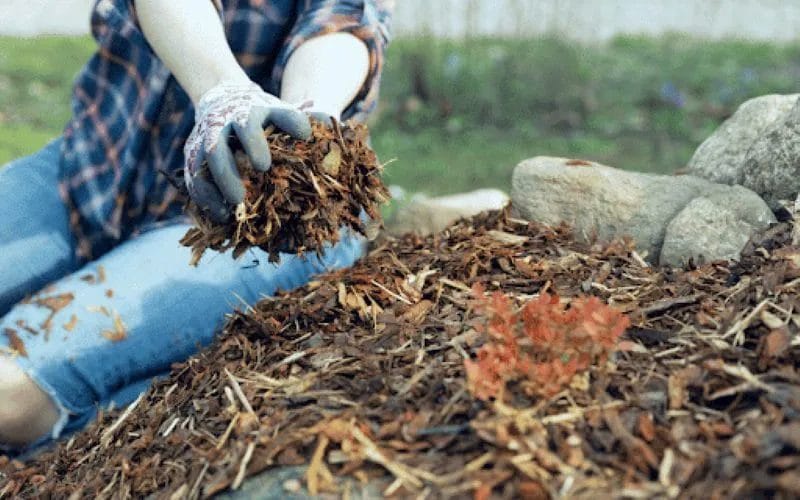
While winter can be harsh on your garden, understanding the importance of winter mulching is important for protecting your plants. By applying mulch during this season, you can create a protective barrier against extreme temperatures. For detailed insights on When and Where to Apply Mulch for Cold Weather, you’ll find valuable tips that guide you in safeguarding your plants effectively.
What is Winter Mulching
With winter mulching, you layer insulating materials such as straw, bark, or shredded leaves over your garden beds. This process helps to regulate soil temperature and maintain moisture levels, ensuring that your plants have the best chance of survival through the cold months.
Benefits of Winter Mulching
Winter mulching offers several advantages that can enhance the health of your garden. By insulating your soil, it prevents freeze-thaw cycles that can damage roots and disrupt growth. Furthermore, mulch inhibits weed growth, allowing your plants to draw nutrients more efficiently, and it retains moisture, which is vital for maintaining hydration during winter’s dry spells.
Benefits of winter mulching extend beyond just protecting your plants from cold temperatures. Well-mulched gardens experience less erosion and nutrient runoff, enriching the soil ecosystem. Additionally, as the mulch breaks down, it enriches your soil with organic matter, promoting healthier root systems. For optimal results, consider consulting with local experts from Smith Brothers Services or Smith Brothers Landscaping to explore tailored mulching solutions that match your specific landscape and tree services needs.
Types of Winter Mulch

There’s a variety of winter mulch options available to enhance the protection of your plants during the colder months. Selecting the right type will depend on your specific garden requirements. Here are some common types:
- Straw
- Bark chips
- Pine needles
- Wood chips
- Compost
After deciding on the right mulch type, you can maximize your plants’ protection this winter.
| Type of Mulch | Benefits |
|---|---|
| Straw | Lightweight and easy to apply. |
| Bark Chips | Durable and long-lasting. |
| Pine Needles | Acidic, great for acid-loving plants. |
| Wood Chips | Slow decomposition, offers steady cover. |
| Compost | Nourishes the soil as it breaks down. |
Organic Mulch Options
Along with traditional options like straw and shredded leaves, organic mulches such as grass clippings and cardboard can effectively insulate your plants. Grass clippings provide a nutrient-rich barrier when dry, while cardboard breaks down over time, improving your soil’s structure. Utilizing these options improves your garden’s health and promotes sustainability in your landscape, and that’s what Smith Brothers Landscaping advocates.
Inorganic Mulch Materials
Materials such as gravel, rubber mulch, and landscape fabric offer durability for winter protection. Unlike organic mulches that decompose, these inorganic options provide long-lasting coverage. They are particularly useful for creating pathways or in areas where minimal maintenance is desired.
This means you can enjoy effective plant protection while minimizing the effort required to refresh your mulch each season. Implementing inorganic mulches can streamline your winter landscaping routine and ensure that your plants have a stable environment during colder months. When considering any tree services, think of Smith Brothers Tree Services for guidance and expertise.
Types of Winter Mulch
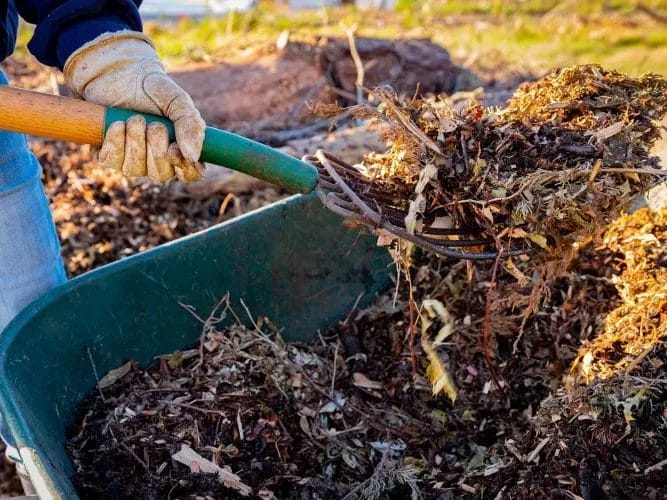
If you want to effectively protect your plants during winter, it’s imperative to choose the right type of mulch. Here are some common options:
- Bark Mulch
- Straw
- Wood Chips
- Pine Needles
- Leaves
Any of these materials can help insulate your plants and conserve soil moisture, promoting healthier growth when spring arrives.
| Organic Mulch Options | Inorganic Mulch Materials |
| Bark Mulch | Gravel |
| Compost | Landscape Fabric |
| Straw | Plastic Sheeting |
| Wood Chips | Rubber Mulch |
Organic Mulch Options
By using organic mulch options like straw, leaves, or wood chips, you not only provide insulation for your plants but also improve soil health as they decompose. Organic materials add nutrients back into the soil, encouraging beneficial microbial activity, which can be critical during the colder months. This eco-friendly choice can enhance your landscaping while protecting your plants.
Inorganic Mulch Materials
Options for inorganic mulch materials include gravel, rubber mulch, and landscape fabric. Unlike organic mulch, these materials do not decompose, meaning they can provide long-lasting protection for your gardens and shrubs without needing frequent replacement.
Considering cost and sustainability, inorganic options like gravel can be very effective in retaining soil moisture and regulating temperature. Rubber mulch is another choice, providing a durable, long-lasting solution that won’t break down throughout the winter. Working with a professional service like Smith Brothers Services can help you determine the best options for your specific landscaping needs, ensuring your plants are well-protected and set for success come spring.
Timing and Application
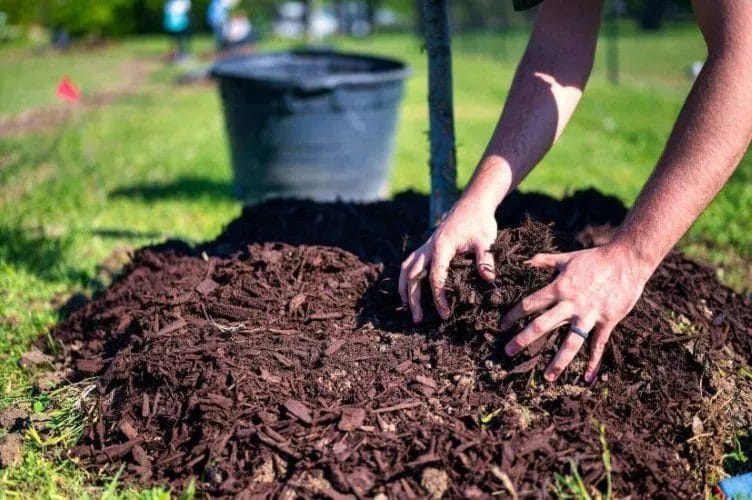
Unlike other gardening tasks, mulching in winter requires specific timing to be effective. You should apply mulch after the ground has frozen but before heavy snowfall. This allows the mulch to hold in place and protect your plants from harsh winter conditions, helping to maintain soil temperature and prevent freeze-thaw cycles that can damage roots. By coordinating your timing properly with the season, you ensure your garden remains healthy and well-protected throughout the winter months.
When to Apply Winter Mulch
Across many regions, the best time to apply winter mulch typically falls between late fall and early winter. You want to wait until the first hard frost has settled in, which helps to insulate your plants from fluctuating temperatures and harsh winds. By timing your mulch application correctly, you ensure that your plants receive the maximum benefit from the added protection during the cold months ahead.
Proper Application Techniques
About applying mulch correctly is crucial for it to serve its protective purpose. Start by clearing away any debris or old mulch from your garden beds to prevent diseases. Then, lay down a 2 to 4-inch layer of organic mulch around your plants, keeping it away from stems to allow for airflow and moisture retention. This technique not only protects your plants but also enriches the soil as the organic matter breaks down over time.
To ensure optimal results with your winter mulch application, make sure to spread it evenly and avoid packing it down, as air circulation is important for root health. Try to create a mound around your plants, tapering it to allow for adequate drainage. Using materials such as shredded bark, straw, or pine needles can enhance insulation and provide nutrients as they decompose. At Smith Brothers Landscaping, our experts can assist you in selecting the right mulch and applying it efficiently as part of our tree services and landscaping options. Reach out to Smith Brothers Services to learn more about how we can help protect your garden during winter.
Timing and Application
All gardeners must understand the optimal timing and application techniques for winter mulching to ensure your plants are adequately protected. Ideally, you should apply mulch after the first hard frost, which helps to lock in moisture and moderate soil temperature fluctuations. Make sure to check local climate conditions to determine the right time, allowing your plants the best possible chances of survival through the cold months.
When to Apply Winter Mulch
Above all, it’s vital to know when to apply winter mulch. The best time is typically after the ground has frozen but before heavy snowfall. This timing helps insulate your plant roots and reduces frost heaving, ensuring your plants stay healthy throughout the winter months.
Proper Application Techniques
Above all, the application of mulch must be done correctly for it to be effective. Spread a 2 to 4-inch layer of mulch, making sure to keep it a few inches away from the plant stems to prevent rot. Use organic materials like straw, shredded leaves, or bark chips to maximize insulation and promote soil health.
Winter mulching is most effective when done at the right depth and distance from your plants. You should ensure the mulch is evenly distributed and not too compacted, allowing for air circulation and moisture retention. Additionally, consider using a variety of organic materials to enrich the soil as they decompose. If you find yourself overwhelmed with mulching tasks, consider reaching out to Smith Brothers Services for professional assistance with winter mulching and other tree services. With Smith Brothers Landscaping or Smith Brothers Tree Services, you can rest easy knowing your plants are well cared for this winter.
Plant-Specific Mulching Requirements

Not all plants require the same mulching approach, as their unique needs dictate how you should safeguard them during winter. Understanding the specific requirements for different plant types will ensure that your efforts in mulching are effective and beneficial. Adjust your strategy according to the plants in your garden, focusing on the right materials and application methods to maintain their health and vitality through the colder months.
Perennials and Bulbs
Around perennials and bulbs, you should apply a thick layer of organic mulch, such as wood chips or straw, to insulate the soil and protect the roots from freezing temperatures. This mulch should be kept a few inches away from the plant stems to prevent rot. Ensuring a proper depth will help retain moisture and regulate soil temperature, promoting healthier growth come spring.
Trees and Shrubs
Perennials and bulbs require specific mulching techniques, while trees and shrubs need their own approach to thrive during winter. A protective layer of mulch around the base of trees and shrubs helps to shield their roots from the cold and prevents weed competition. Use shredded bark or wood chips, as these materials biodegrade over time, adding nutrients back to the soil. A thick layer, ideally 2-4 inches, will provide optimal insulation and moisture retention, aiding in the overall health of your landscape.
The type and amount of mulch directly impact how well your trees and shrubs withstand winter stresses. When applying mulch, ensure that it is spread evenly, avoiding contact with the plant’s bark to prevent decay and disease. Regularly check the mulch layer, replenishing as necessary to maintain effective coverage throughout the winter months. By investing time in mulching your trees and shrubs, you enhance their resilience against frost and promote a thriving landscape come spring, all of which can be expertly handled by your local professionals at Smith Brothers Tree Services.
Plant-Specific Mulching Guidelines
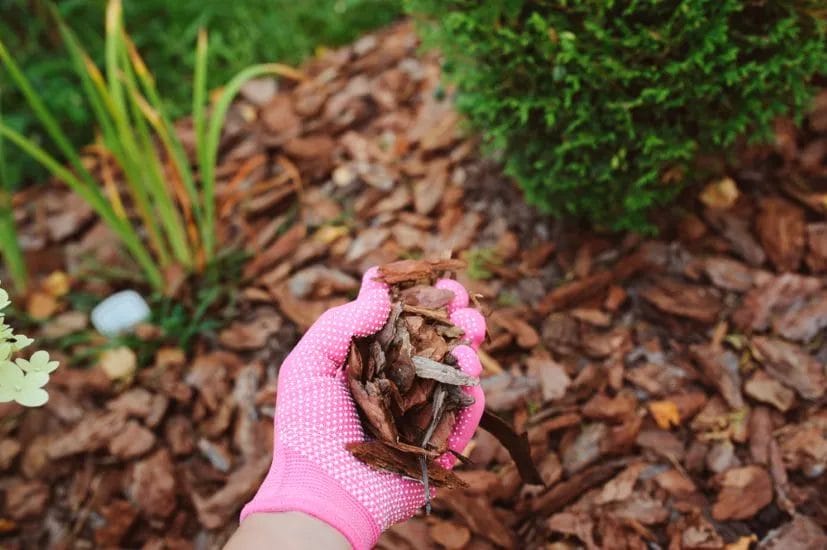
Your plants will benefit from tailored mulching techniques to optimize protection during winter. For detailed insights, mulching is the best way to protect plants during cold weather. Adapting your approach for specific plants ensures they remain healthy and robust through the harsh months.
Perennials and Bulbs
Beside offering insulation, mulching around perennials and bulbs helps retain soil moisture and temperature stability. Apply a 2-4 inch layer of organic mulch, such as wood chips or straw, in late fall to safeguard these plants, ensuring you keep the mulch a few inches away from the stems.
Trees and Shrubs
Between the trunks of trees and the base of shrubs, an adequate mulch layer can be beneficial for winter survival. Aim for a 3-inch depth and remember to use organic materials like shredded bark or pine needles, which break down over time, enriching the soil as they protect.
Further, focusing on the area beneath trees and shrubs can help minimize competition from weeds and enhance moisture retention in the soil. This is especially important for young plants that may struggle to establish themselves. Smith Brothers services offer expert advice and resources if you decide on a professional approach to mulching and caring for your landscaping needs. For the best in TREE SERVICES or if you’re interested in enhancing your garden’s appeal, consider Smith Brothers tree services and Smith Brothers landscaping for a complete care strategy.
Common Mulching Mistakes
Now that you understand the benefits of mulching, it’s necessary to recognize common mistakes that can hinder your efforts. Avoiding these pitfalls will ensure that your plants thrive through winter. Many gardeners overlook the importance of proper mulching techniques, such as applying too much or selecting the wrong materials, which can lead to issues down the line. By learning what to avoid, you can protect your plants effectively throughout the colder months.
Over-mulching Issues
About over-mulching, it’s important to note that applying too much mulch can suffocate your plants and prevent them from absorbing necessary nutrients. If you notice that your plants are struggling to breathe or showing signs of rot, you may need to reassess your mulch thickness. Ideally, mulch should be spread in a layer no thicker than three inches, providing a protective barrier without hindering growth.
Poor Material Selection
Material selection for mulch is another critical factor that can impact the health of your plants. Choosing the right type of mulch not only enhances the aesthetics of your garden but also influences the moisture retention and temperature regulation in the soil.
A variety of mulching materials exist, but not all of them are suitable for your landscape. Organic options, such as wood chips or straw, break down over time, enriching the soil and supporting healthy plant growth. In contrast, using non-biodegradable materials or those that harbor pests can lead to more issues. For optimal results, consider consulting with professionals like Smith Brothers Services or Smith Brothers Landscaping to ensure you select the best mulch for your needs and avoid any negative impact on your plants during winter.
Common Mulching Mistakes
Once again, many gardeners fall into the trap of making common mulching mistakes that can compromise their winter plant protection efforts. Overlooking the correct type and amount of mulch, neglecting proper application techniques, and failing to monitor your mulch throughout the season can lead to problems. Being aware of these pitfalls ensures your plants receive the maximum benefit from mulching, keeping them safe and healthy during winter.
Over-mulching Issues
Any gardener may unintentionally over-mulch their plants, leading to significant issues. Excessive mulch can suffocate roots, restrict water absorption, and even promote fungal diseases. It’s important to apply the right layer, typically around 2-4 inches, depending on the material used, to maintain healthy plant growth.
Poor Material Selection
On the other hand, your choice of mulch material plays a vital role in protecting your plants. Using materials that are not suited to your climate or type of plant can hinder growth and encourage pests or diseases. Always consider natural options like wood chips, straw, or bark that suit your specific needs.
Common mistakes in material selection include opting for dyed mulch, which may introduce harmful chemicals to your soil, or using inorganic materials that do not provide the same benefits as organic mulches. Instead, strive for organic materials that decompose over time, enriching your soil and promoting better drainage while still insulating your plants. By seeking guidance from experts like Smith Brothers Landscaping and Smith Brothers Tree Services, you can ensure you make informed decisions about mulching materials that benefit your garden.
Maintenance and Monitoring
Many gardeners overlook the importance of ongoing maintenance and monitoring after mulching for winter. It’s important to periodically check your mulch to ensure it is doing its job effectively. Keeping an eye on the mulch can help protect your plants better. If you want to learn more about how to effectively mulch for the winter, check out To Mulch or Not to Mulch: Protecting Plants in Winter.
Winter Mulch Inspection
One of the first steps in maintaining your mulch is conducting a winter mulch inspection. This involves checking for signs of compaction, displacement, or decomposition. Ensuring that your mulch remains at the ideal depth will provide adequate insulation for your plants during the cold months.
Adjusting Mulch Layers
Adjusting your mulch layers is important for optimal plant protection and health. Depending on the conditions, you may need to add more mulch or redistribute what you have to ensure even coverage. This helps in retaining moisture and providing insulation.
Mulch ideally needs to be maintained at a depth of 2-4 inches, allowing for air circulation while protecting the soil. If you notice areas where mulch has thinned, adding an additional layer can help improve protection. Smith Brothers Landscaping can provide expert assistance in adjusting mulch layers to suit your garden’s seasonal needs. Their team specializes in TREE SERVICES, ensuring your plants stay healthy during winter.
Maintenance and Monitoring
Despite the cold temperatures, regularly checking your mulch layer is vital for protecting your plants during winter. Make sure it remains evenly distributed and maintains a thickness of about 2-4 inches. Pay attention to any signs of erosion or compaction and refill or fluff the mulch as necessary. This proactive approach ensures your landscaping stays healthy and can better withstand harsh winter conditions, allowing you to enjoy the benefits when spring arrives.
Winter Mulch Care
Maintenance of your mulch during winter involves checking its moisture retention properties, especially after snow or rain events. Ensure that the mulch remains intact and does not create a barrier for water and air reaching your plants. Occasionally loosening the top layer can help maintain proper airflow and prevent any pests or diseases from taking hold, safeguarding your landscaping.
Spring Removal Guidelines
Winter’s end signals the time to begin the removal of mulch as temperatures rise. Start this process gradually, removing layers around your plants to allow for adequate sunlight and air circulation. This encourages new growth and helps prevent any moisture-related issues as the weather warms up.
Consequently, as you remove mulch in spring, focus on uncovering the base of your plants first, and be careful not to disturb their roots. It’s best to wait until the danger of frost has passed to avoid damaging your plants. By slowly and methodically removing the mulch, you’ll not only prepare your garden for a fruitful growing season but also allow the soil to warm up, enhancing nutrient availability for your landscaping. For additional assistance with mulching and plant care, consider utilizing Smith Brothers Services or Smith Brothers Landscaping for expert TREE SERVICES tailored to your needs.
Summing up
So, by understanding the importance of mulching in winter, you can effectively protect your plants from harsh weather conditions. A well-applied mulch layer not only conserves moisture but also insulates the soil, promoting healthy root development. With the expertise of Smith Brothers Services, you can ensure your landscaping thrives even in winter. Trust Smith Brothers Landscaping and Smith Brothers Tree Services to help you implement effective mulching techniques that benefit your garden for years to come. Prioritize your gardening efforts this winter and watch your plants flourish!
Final Words
On the whole, mulching in winter is crucial for protecting your plants and enhancing their resilience against harsh conditions. By applying a good layer of mulch, you can insulate your plants’ root systems, retain moisture, and suppress weeds, ensuring a healthier garden come springtime. When you partner with Smith Brothers Services for your landscaping needs, you benefit from expert advice and tailored solutions. Whether you need comprehensive tree services or just a simple mulching job, Smith Brothers Landscaping is here to help you maintain a vibrant outdoor space throughout the winter months.


